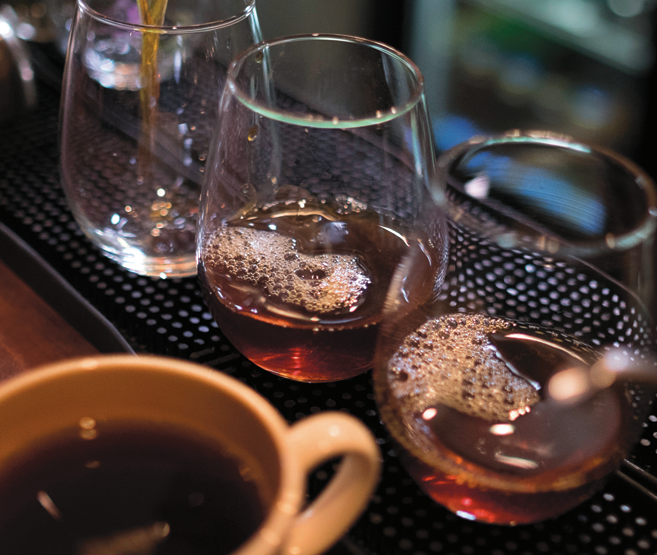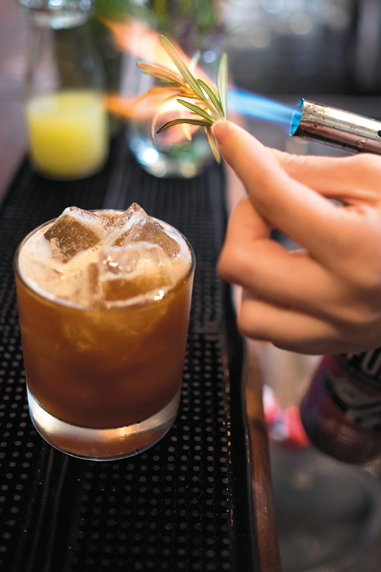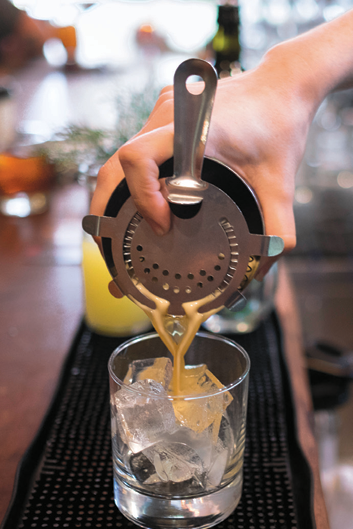Raising the Heat on Cold Coffee
It all began when my husband, Jeremias, and I were in California on vacation, although vacation doesn’t seem like the right word for traveling with two kids under the age of 2. After being wakened before the sun, we turned on cartoons and searched Yelp for the nearest coffee shop. When we finally made it out of our hotel and to the coffee shop, we were offered a “pour over” of a single-origin Ethiopian coffee, the coffee we now credit with changing the course of our lives. It was sweet and juicy and unlike any coffee we had ever tasted. We discovered coffee could transcend a daily caffeine fix to become amazing. We needed to know what made this coffee so special and began to search for answers.
There are a vast number of variables that influence the taste of a cup of coffee. Important factors include where and how the coffee cherries are picked and processed, and how carefully and expertly the green coffee is roasted. After spending the next several years researching and educating ourselves about sourcing and roasting coffee, in 2016, we opened Broom Wagon Coffee, a coffee roastery in the West Ashley neighborhood of Charleston. We work closely with coffee importers who provide farmers with higher pay, stability and dignity, and we take great care in showcasing the farmers’ hard work by applying meticulous roasting practices to bring out the unique qualities found in each coffee. Once the coffee is roasted, how the coffee is brewed is the final step in creating a superior cup of coffee. Since the weather has been heating up in Charleston, now is the perfect time to explore the best ways to brew for cold coffee. Cold brew is the best-known form of cold coffee, and it is ridiculously easy to make by submerging coffee grounds in cold water for 12 to 24 hours. The appeal of cold brew is that it can mellow out the undesirable traits, such as bitter, ashy and papery flavors, that are often found in lower-quality or old coffees. Since it has a concentrated, generic coffee flavor, cold brew works well as a base component in coffee cocktails and can stand up to added cream and flavorings. We rarely drink cold brew, but when we do, it’s in a cocktail to showcase the additional ingredients.
The recommended temperature to properly brew coffee is between 195° and 205°, because coffee is most soluble at high temperatures. Cold brew attempts to compensate for not using hot water by drastically increasing the quantity of coffee grounds and brewing time. However, cold water will never be able to fully dissolve the coffee grounds, no matter how long they soak. Since cold brewing is unable to release the full potential of our high-scoring coffees, we prefer to brew with hot water and then flash chill the coffee. The easiest way to do this at home is using the Japanese Iced Coffee Method in which part of the hot water used to brew is replaced by ice. The hot water releases all the desirable flavor compounds from the coffee grounds while the ice underneath rapidly chills the extracted coffee, helping to lock in the volatile, aromatic properties that make high quality coffees special. The truly magical part happens once you take your first sip, when the warmth from your mouth reawakens and releases the aromatics. The result is a balanced, flavorful cold coffee with a beautiful, lingering finish. There are many ways to enjoy cold coffee, and we encourage you to experiment and find your favorites. Use these recipes to stay refreshed and caffeinated all summer long.
Find flash-chilled, nitro Broom Wagon Coffee on tap at The Charles Towne Fermentory in Avondale and Two Blokes Brewing in Mt. Pleasant, or order freshly roasted coffee with free local Charleston delivery at broomwagoncoffee.com.








